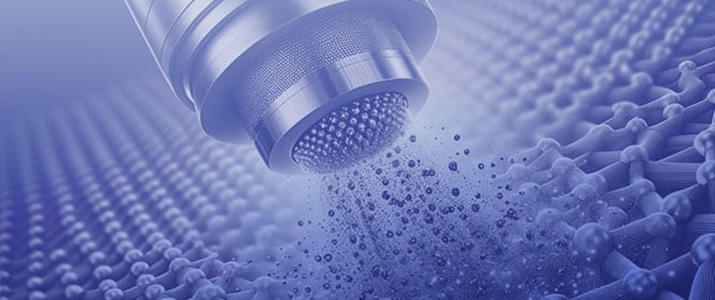阳离子和阴离子表面对黑曲霉分生孢子垂直力和侧向力及结合的影响
IF 4.4
3区 材料科学
Q2 CHEMISTRY, MULTIDISCIPLINARY
引用次数: 0
摘要
分生孢子与表面的结合是真菌形成生物污垢的先决条件。本研究选用黑曲霉1957和1988亚型,它们产生不同形状的分生孢子(分别为圆形和穗状)。测试表面的特征是其表面形貌,润湿性和硬度。分生孢子测定包括垂直和侧向力测量,以及附着、粘附和保留测定。阴离子表面比阳离子表面(Ra分别为5.4 nm、36°和0.5 GPa)更粗糙(Ra为2.4 nm)、更不湿润(54°)和更硬(0.72 GPa)。垂直力和侧向力实验表明,这两种类型的分生孢子都以更大的力粘附在阴离子表面,并受到表面润湿性的影响。结合实验表明,1957年和1988年黑霉的分生孢子与阴离子表面结合较少。然而,表面润湿性会影响涂层上分生孢子的密度和分散,而孢子的形状则会影响聚类。这项工作表明,阴离子表面比阳离子表面对黑孢霉1998孢子更具排斥性,但一旦附着,分生孢子更牢固地与阴离子表面结合。这项工作告知了理解分生孢子如何与表面紧密结合的重要性,这可以用来防止生物污染。本文章由计算机程序翻译,如有差异,请以英文原文为准。
Effects of Cationic and Anionic Surfaces on the Perpendicular and Lateral Forces and Binding of Aspergillus niger Conidia
The binding of conidia to surfaces is a prerequisite for biofouling by fungal species. In this study, Aspergillus niger subtypes 1957 and 1988 were used which produced differently shaped conidia (round or spikey respectively). Test surfaces were characterised for their surface topography, wettability, and hardness. Conidial assays included perpendicular and lateral force measurements, as well as attachment, adhesion and retention assays. Anionic surfaces were less rough (Ra 2.4 nm), less wettable (54°) and harder (0.72 GPa) than cationic surfaces (Ra 5.4 nm, 36° and 0.5 GPa, respectively). Perpendicular and lateral force assays demonstrated that both types of conidia adhered with more force to the anionic surfaces and were influenced by surface wettability. Following the binding assays, fewer A. niger 1957 and A. niger 1988 conidia bound to the anionic surface. However, surface wettability affected the density and dispersion of the conidia on the coatings, whilst clustering was affected by their spore shapes. This work demonstrated that anionic surfaces were more repulsive to A. niger 1998 spores than cationic surfaces were, but once attached, the conidia bound more firmly to the anionic surfaces. This work informs on the importance of understanding how conidia become tightly bound to surfaces, which can be used to prevent biofouling.
求助全文
通过发布文献求助,成功后即可免费获取论文全文。
去求助
来源期刊

Nanomaterials
NANOSCIENCE & NANOTECHNOLOGY-MATERIALS SCIENCE, MULTIDISCIPLINARY
CiteScore
8.50
自引率
9.40%
发文量
3841
审稿时长
14.22 days
期刊介绍:
Nanomaterials (ISSN 2076-4991) is an international and interdisciplinary scholarly open access journal. It publishes reviews, regular research papers, communications, and short notes that are relevant to any field of study that involves nanomaterials, with respect to their science and application. Thus, theoretical and experimental articles will be accepted, along with articles that deal with the synthesis and use of nanomaterials. Articles that synthesize information from multiple fields, and which place discoveries within a broader context, will be preferred. There is no restriction on the length of the papers. Our aim is to encourage scientists to publish their experimental and theoretical research in as much detail as possible. Full experimental or methodical details, or both, must be provided for research articles. Computed data or files regarding the full details of the experimental procedure, if unable to be published in a normal way, can be deposited as supplementary material. Nanomaterials is dedicated to a high scientific standard. All manuscripts undergo a rigorous reviewing process and decisions are based on the recommendations of independent reviewers.
 求助内容:
求助内容: 应助结果提醒方式:
应助结果提醒方式:


